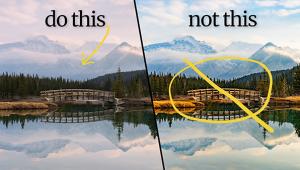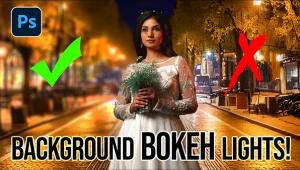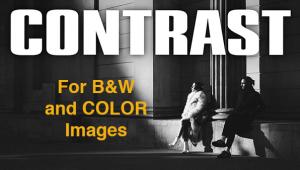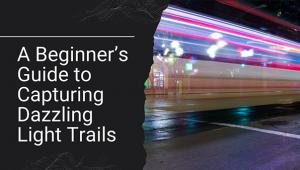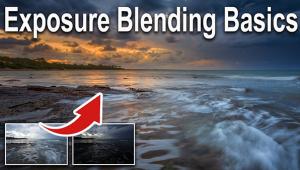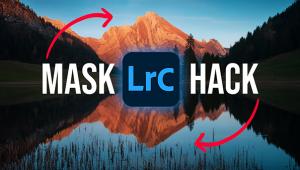Q&A For Digital Photography
To aid us in making Digital Help as helpful as possible, please be specific in your query and include components, including software, that you use. David says, “Make me guess the problem and I might guess wrong.”—Editor
A Quality Imaging Setup
Q. I read with considerable interest your blog regarding the specifications and critical features you felt were of value to the photographer working with digital images.
Your points indicate that a high-quality LCD graphics monitor, a 2D video card, and lots of RAM are the keys to satisfactory performance.
Have you tweaked your opinion on this, or are you still holding to these items? Are there any other items to factor in that I need to take into account? I do not want to spend lots of extra money on items that really do not influence image editing, but do want the very best I can afford.
Tom Scherer
Des Moines, IA
A. Digital photographic editing is done by making perceptual evaluations of the image on the display screen. If you cannot see all of the information in the image because of incomplete or inadequate LCD display qualities you cannot make accurate and refined image-editing decisions.
Video cards are made to favor different uses of a computer; for instance, a high efficiency in processing 3D images is an advantage to users who play video games. Over the years, purchasers of computers who will be using an image editor like Photoshop have indicated a preference for ATI Radeon video cards, as they apparently respond more effectively to reproducing the editing effects of Photoshop and similar applications.
Some years ago it was the practice of computer makers to offer a minimum of RAM in models sold, as it kept the basic price down. But RAM has become much less costly over the years, so the basic amount of RAM has been increased. However, if an image being edited has numerous layers, for example, application functions will slow down because it has to use virtual memory in the hard drive to work properly, so choosing a higher amount of RAM is an advantage.
Computers today are made for the general public and businesses, and serious digital photography users represent less than 1 percent of the population. So, a computer made to favor serious digital photography has to be custom specified by a customer. Most of the computers on the shelf do not include any models that particularly favor serious digital photography use.
Film Scanning Software
Q. I have Windows 7 and recently acquired a Nikon Coolscan 5000, but have very little experience in scanning. I have the Nikon software but found the interface finicky. I also have VueScan Professional Edition, but find it hard to use partly because unnecessary switches are hidden, but also because I haven’t found a good manual. I had been thinking that if all else failed, I could get SilverFast. But you say that Version 8 is not worth buying. Does that mean I should think of buying Version 6.6? If I do, will it be easy to obtain drivers for it sometime in the future? Clearly I need to fix on just one software system and make the best of it. What do you recommend?
Andrew Morrogh
via e-mail
A. The only software I would recommend for the Nikon Coolscan 5000 that runs successfully on Windows 7 is SilverFast Version 6, which is available from LaserSoft Imaging. It is fully backed with a manual you can download as well as video instructions. You do not need to buy the software to try it out to see how it works. Go to www.silverfast.com for a free trial version download. SilverFast 8 is well-engineered software, but after using the older versions of SilverFast for a dozen years I am not pleased to have to relearn an entirely new and different interface and workflow. If you have never used SilverFast, beginning with Version 8 should be as easy as Version 6 is for me.
The original Nikon software will not run successfully on Windows 7. However, with a Mac I can and do run both Windows XP Pro SP3 and Windows 7, using Parallels software, so I am able to run everything with just one inexpensive Mac mini.
For most photographers film scanning is not a basic operation; it is complicated and can be confusing. Visit SilverFast on the web and go through all the features and functions supported by the software. While you may find that “basic” is complicated, it can be done. I’ve been doing scanning for 20 years and it remains a challenge, but with practice I keep learning how to do it better.
iMac Problems Addressed
Q. Recently I read in your column that someone asked about calibrating their iMac with the X-Rite ColorMunki. I have had continuous problems getting my iMac to print the same as the screen. I have tried most calibration tools and none have worked. However, as a last resort, I borrowed a friend’s ColorMunki Photo and it did the trick. Now my screen matches almost perfectly.
That said, I have a strange thing going on with CS5 and my iMac. When I use the Content Awareness tool, it won’t work, and the Clone tool works intermittently. Have you ever heard of this problem? Could it be that the iMac just can’t handle some of these tools effectively as you keep adding more and more plug-ins?
Last year, you suggested getting a Dell monitor—is the new EIZO a better monitor, or are they both good? Remember, I don’t seem to have the calibration issue anymore.
Bruce Feldman
via e-mail
A. The ColorMunki Photo is an over $500 system and not something most readers could afford. The new ColorMunki Display is a cheaper, simpler version of the i1Display Pro that I do recommend, and reported on, in the December, 2011, issue of Shutterbug. If its ADC connects with iMac video hardware then it too should work. This awaits testing, however.
If you are using third-party plug-ins I would suggest that you contact the maker and get a current version. As to CS5 tools not working, that is something I have heard of from others, and it may be that earlier iMacs just don’t have video support for those functions. The video in current iMacs and Mac minis has been upgraded to a fairly advanced AMD Radeon version. Personally, I have Photoshop CS5, but actually get better performance with CS4 so I use it for my editing refinement, mostly retouching. I don’t like the way CS5 performs; as complex and sophisticated as it is, data errors in any of its files and folders could be a problem. So, just reinstall the application in a clean space. That is an old solution often helpful in eliminating hidden function defects.
Yes, EIZO is the topmost professional display maker, and they make displays not just for photography and publishing, but also for scientific research, medical practice, and more. The EIZO FlexScan has less internal digital functioning support compared to the EIZO ColorEdge models, but with a good display management system it will provide a comparable quality screen image.
The Dell UltraSharp U2410 has a good quality screen and hardware, but as I’ve reported in the past and according to some readers, there have been some quality issues with some of their out-of-the-box monitors.
Monitor Shape?
Q. My ViewSonic VP2030b monitor died and I am looking for a replacement. The ViewSonic measures 16”(W) and 12”(H), so it can be regarded as a square monitor. My question: does a square monitor offer better editing than a widescreen? I’m told if you view a circle in a “square monitor” it is perfectly round, and if you view the same circle in a “widescreen monitor” it is oval shaped, so I don’t know if this distortion would be a problem when viewing landscape and macro photos on a widescreen monitor.
I like the 1600x1200 resolution I got with the ViewSonic, but I would go for a higher resolution monitor such as the Dell U2410. I read your review, and others, regarding the U2410, and I like what I read and it fits my budget, but the U2410 is getting old. Is there a similar monitor that is better than the U2410 in the same price range?
Gary
via e-mail
A. Whoever told you that a widescreen display will reproduce a circle as an oval is pulling your chain. All LCD displays, either 4:3 format or widescreen, have square pixels. Instead of adding pixels to make a screen larger overall the manufacturers made a 1600x1200 pixel display into a 1920x1200 pixel display so it would reproduce a widescreen movie format that fit the whole screen. It is that simple.
There is currently no substitute for the Dell UltraSharp U2410 at a list price of $599. For the same size screen the lowest price I could find on the LaCie 324i was $1016. I have one and it is a really great display. The best in this class is the EIZO FlexScan SX2462W, and I have seen it for about $1165.
As I’ve reported, readers have had some quality issues with some out-of-the-box U2410 units; if a user gets a defective one they have to get Dell to replace it, and Dell does that. I have the original U2410 I bought from Dell and it works great, and is now running on the new Mac mini I reported on in the April, 2012, issue of Shutterbug. The only other brand in this category is NEC, and I don’t like recommending their display because you have to use NEC SpectraView software and an approved colorimeter with it, and the software does not work with any other kind of display.
Keeping Pace With Tech Changes
Q. After reading your recent review of the Mac mini, I have to ask about your mention of using SilverFast 8 for scanning. Have improvements been made to this release so that you now recommend using it? Past comments you’ve made were not positive. I may need this software for some of my old and perfectly capable hardware when I upgrade or change my operating systems.
The (Mac mini) review makes the Mac switch sound much more feasible. One other question concerning the Mac mini—do you always leave an external drive connected for a Photoshop scratch disk?
Harvey Morgan II
Santa Fe, NM
A. Although you did not mention what particular hardware, scanner(s) you would be running and what software you have been using to run them, if you are not now a SilverFast user then SilverFast 8 is no more or less difficult to learn to use than Version 6. For someone like myself, like many scanner users who have used SilverFast for a while, upgrading from Version 6 to Version 8 is like starting from scratch and having to relearn a new application that is completely different from earlier versions.
I have no reason to fault SilverFast 8 technically. I was a beta tester and what I reported was taken seriously. My contacts at LaserSoft Imaging inform me that the development and refinement of SilverFast continues, including making Version 8 even better. My only criticism is that it’s completely different from the previous design of SilverFast, so it requires an experienced user to relearn a new application, and who likes to do that?
As to the Apple Mac, if you have scanners that only run on Windows XP, like some Minolta and Nikon scanners, then, other than SilverFast, the best and least expensive option is to add Microsoft XP Pro SP3 either as a “boot camp” optional boot drive or virtually by using an inexpensive application like Parallels (www.parallels.com). I have the original software driver that operates fine with my Minolta DiMAGE Scan Elite 5400 II 35mm scanner running on Windows XP on my Mac and it works just like when it was new.
If you get the Mac mini I reported on it comes with 4GB of RAM. With Photoshop I have never run out of memory requiring the scratch disk with that much RAM, and you can go up to 8GB of RAM, so there is no reason to need a scratch disk. If ever needed there is plenty of room on the main hard drive for that function. However, I do use external hard drives to back up my system regularly using the automatic Apple Time Machine utility. That could come in handy if I had a major crash and my system needed rebuilding.
ANNOUNCEMENT
I am pleased to announce the latest 4.3 Edition to my eBook Digital Darkroom Resource CD. The CD now contains 33 chapters totaling 399 pages in Adobe Acrobat .PDF format, providing easy-to-read text and large high-quality illustration. The CD is available for $20 plus $5 shipping and handling (US Mail if available). Ordering is as simple as sending a check or money order for $25 made out to me, David B. Brooks, and mailed to PO Box 2830, Lompoc, CA 93438.
- Log in or register to post comments




















